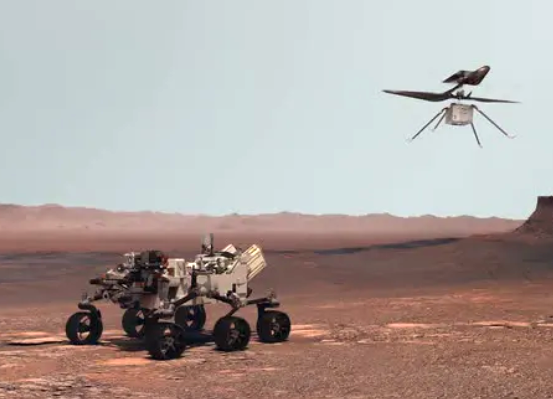Mars robot grabs first core
 NASA’s Perseverance Rover has picked up some truly groundbreaking rocks.
NASA’s Perseverance Rover has picked up some truly groundbreaking rocks.
The Mars rover has drilled into a rock in Jezero Crater, which is thought to have been a lush lake bed a few billion years ago.
The core is now enclosed in an airtight titanium sample tube, making it available for retrieval in the future.
Through the Mars Sample Return campaign, NASA and ESA (European Space Agency) are planning a series of future missions to return the rover’s sample tubes to Earth for closer study.
The samples it took will be the first set of scientifically identified and selected materials returned to our planet from another.
“NASA has a history of setting ambitious goals and then accomplishing them, reflecting our nation’s commitment to discovery and innovation,” says NASA Administrator Bill Nelson.
“This is a momentous achievement and I can’t wait to see the incredible discoveries produced by Perseverance and our team.”
Perseverance is currently exploring the rocky outcrops and boulders of ‘Artuby’, a ridgeline of more than 900 metres bordering two geologic units believed to contain Jezero Crater’s deepest and most ancient layers of exposed bedrock.
“Getting the first sample under our belt is a huge milestone,” said Perseverance Project Scientist Ken Farley of Caltech.
“When we get these samples back on Earth, they are going to tell us a great deal about some of the earliest chapters in the evolution of Mars.”
The sample-taking process began on September 1, when the rotary-percussive drill at the end of Perseverance’s robotic arm cored into a flat, briefcase-size Mars rock nicknamed “Rochette.”
After completing the coring process, the arm maneuvered the corer, bit, and sample tube so the rover’s Mastcam-Z camera instrument could take images of the contents of the still-unsealed tube and transmit the results back to Earth.
After mission controllers confirmed the cored rock’s presence in the tube, they sent a command to complete processing of the sample.
On September 7, Perseverance transferred sample tube serial number 266 and its Martian cargo into the rover’s interior to measure and image the rock core. It then hermetically sealed the container, took another image, and stored the tube.
“With over 3,000 parts, the Sampling and Caching System is the most complex mechanism ever sent into space,” said Larry D. James, interim director of NASA’s Jet Propulsion Laboratory.
“Our Perseverance team is excited and proud to see the system perform so well on Mars and take the first step for returning samples to Earth. We also recognise that a worldwide team of NASA, industry partners, academia, and international space agencies contributed to and share in this historic success.”
The rover’s initial science foray, will be complete when Perseverance returns to its landing site. At that point, Perseverance will have traveled between 2.5 and 5 kilometres and may have filled as many as eight of its 43 sample tubes.
After that, Perseverance will travel north, then west, toward the location of its second science campaign: Jezero Crater’s delta region.
The delta is the fan-shaped remains of the spot where an ancient river met a lake within the crater. The region may be especially rich in clay minerals. On Earth, such minerals can preserve fossilized signs of ancient microscopic life and are often associated with biological processes.
More mission details are accessible here.







 Print
Print